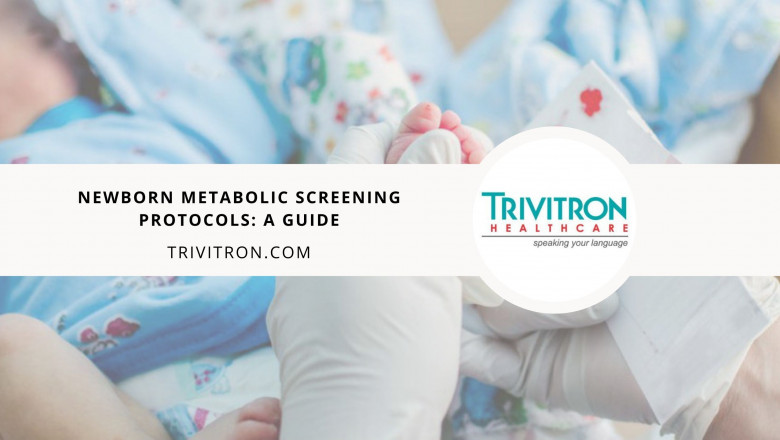views

Newborn screening is on the cusp of becoming standard practise as people become more health conscious. The government has also acknowledged its significance and has been crucial in making newborn metabolic screening a mandatory medical procedure. A "walkthrough" will aid in gaining greater understanding of the topic.
Typically, newborn genetic screening begins 48 hours after birth, while the infant is still in the hospital. Any time after the prescribed deadline poses a danger of delayed treatment for a newborn who, by chance, may test positive for any ailment, and a delay in treatment may cause certain treatable disorders to deteriorate into severe irreversible problems. Some hospitals even advise parents, in cooperation with the child's paediatrician, to have the infant undergo a second blood test between 1 and 2 weeks of age.

Optimally, newborn screening is conducted utilising the three approaches listed below:
-
Blood tests
-
Hearing exam
-
Critical Congenital Heart Disease (CCHD) screening
Blood test
Blood or heel testing is the initial stage in the newborn genetic screening procedure. The heel of the infant is pricked and a few drops of blood are drawn. The blood is subsequently transported to a laboratory for examination. In addition, the hospital personnel will collect critical information such as the baby's name and that of its parents, as well as the baby's age, gender, weight, date and time of first feeding, etc. Blood samples are analysed to diagnose a variety of conditions, such as congenital hypothyroidism, sickle cell disease, phenylketonuria, fatty acid metabolism abnormality, etc.
Hearing exam
As the name suggests, this component of the examination helps determine if the infant has a hearing problem or loss. The following tests are commonly used to assess newborns for hearing loss:
The Otoacoustic Emissions Test identifies whether or not specific areas of the infant's ear respond to sound.
Auditory Brain Stem Response Test, which measures the hearing nerve and brain's response to sound.
CCHD testing
CCHD screening is undertaken to rule out the likelihood of critical congenital heart disease in neonates, hence the term. Using an equipment called a "oximeter," a healthcare professional measures the oxygen level in the blood during this examination. Lower oxygen levels in the blood of an infant may indicate structural or behavioural cardiac abnormalities.
Newborn metabolic screening is recommended not only for newborns born in hospitals, but also for those born at home, in adoption centres, or elsewhere. In addition to providing clarity regarding the baby's health, an effective newborn screening assures the baby's safety, health, and happiness in the future.
A newborn screening kit is a set of medical tests that are performed on a newborn baby to identify any potential health problems. The Trivitron's Newborn Screening Kit is a simple, reliable and affordable solution for the early detection of Newborn metabolic screening. Our newborn screening kit is FDA cleared and CE marked.












